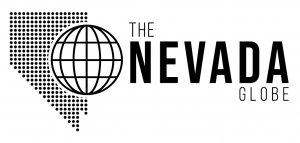
FIRMS US/CA graphic (Screenshot)
OPINION: Fighting Fire With Fire: The Demise of Prometheus
With over 100 million acres of national forests dead or dying, we’re sitting on a powder keg
By Dana Tibbitts, August 17, 2024 1:43 pm
As the wildfire crisis in the American West reaches a tipping point, it’s time for a candid conversation about the role of federal agencies in managing forests and fighting this plague of devastating fires.
LAKE TAHOE, NV. As the American West grapples with an unprecedented wildfire crisis, a sobering reality emerges: our approach to forest management is not just flawed, but potentially catastrophic. The concept of using fire to fight fire, once hailed as innovative, now stands as a testament to our hubris in the face of nature’s raw power.
August 14, 2024, marked the third anniversary of the Caldor Fire, a devastating blaze that serves as a grim reminder of our misguided policies. This inferno, which destroyed over 1,000 homes in mere hours, is not an isolated incident but a symptom of a larger, systemic problem in forest management strategies.
The Caldor Fire’s destructive path echoes a similar tragedy from a century earlier. In August 1923, another fire in the same area devastated the California Door Company’s lumber operation. This eerie repetition of history underscores a crucial point: our failure to learn from past mistakes has dire consequences.

But the 2021 Caldor Fire didn’t occur in a vacuum. It followed closely on the heels of the “Agreement for Shared Stewardship of California’s Forests and Rangelands,” signed in August 2020. This agreement, lauded as a landmark achievement, gave federal and state agencies a virtual “license to burn” under the guise of forest health and resilience. The result? A trifecta of devastating fires—Tamarack, Dixie, and Caldor—that scorched over 1.2 million acres and caused billions of dollars in damages.
And this is just a microcosm of the larger fire picture across the West.
With 2024 fire risk fixed at peak level 5, the National Interagency Fire Center reports that wildfires have already burned over 5.3 million acres YTD across the nation, primarily in the West. This figure surpasses the 10-year average by more than a million acres.
The hard truth is, we’re facing an unnatural disaster of our own making. With over 100 million acres of national forests dead or dying, we’re sitting on a powder keg. The USFS’s current policies and practices are not just failing to address this crisis—they’re actively contributing to new cycles of catastrophic fire.
Contrary to popular narratives, this crisis isn’t primarily the result of climate change or a century of fire suppression. Instead, it’s the consequence of decades of misguided forest management policies and irresponsible stewardship. The U.S. Forest Service (USFS) and other federal agencies have allowed fuel loads to accumulate to dangerous levels, creating tinderbox conditions across vast swathes of public and private lands.
Rather than address this fundamental issue, these agencies have resorted to a strategy of “monitor, manage, and let fires burn.” They cloak this approach in a series of catchy slogans designed to shape public opinion: “Fire Has No Season,” “Learning to Live with Fire,” “Fire Adapted Communities.” These phrases may sound benign, even progressive, but they mask a dangerous reality.
Perhaps most troubling is the redefinition of terms like “full suppression.” Once an unambiguous call to extinguish fires, the Department of the Interior now includes provisions for “managing fire when it provides benefits such as vegetation reduction or improved wildlife habitat.” This semantic sleight-of-hand confuses the public and undermines trust in our institutions.

Meanwhile, the Biden-Harris administration calls for another 60 million acres to burn over 10 years, pressing for increased reliance on costly “innovative technologies” including drones, UAS unmanned aircraft, and high-power satellites. To be clear, these tools are not just being used to forecast, detect and monitor fire, but more disturbingly, to ignite, augment and direct pre-planned, prescribed fire in designated “restoration” zones across many states.
The public must demand a prohibition against the use and weaponization of wildfire “technologies” on the very lands and people they are meant to protect. We must reject the notion that “fire knows no season” and stop using nonsensical jargon to justify allowing precious natural resources to burn unchecked.
Instead, we need a strategy that emphasizes rapid fire suppression followed by responsibly controlled burns and other strategies to mitigate fuel overload. We need to put fires out first and ask questions later.
The wildfire crisis in the American West is indeed complex, but the solution doesn’t lie in letting our forests burn indiscriminately. It’s time for citizens, policymakers and land management experts to unite and forge a new path forward. We need an approach that truly prioritizes the health and safety of our forests, our communities, and our nation as a whole.
The stakes couldn’t be higher. To continue down this perilous path of using wildfires as our predominant “management” tool is to risk losing not only our forests, but our homes, our livelihoods, and our very way of life. We must say it loud and clear: using wildfires to thin trees isn’t just misguided—it’s reckless and potentially catastrophic.
In Greek mythology, Prometheus stole fire from the gods to benefit humanity. Today, we face the irony of needing to protect ourselves from the very fire we thought we could control. It’s time to reassess our relationship with government agencies that have become dangerously reliant on using fire to fight fire and advocate for more responsible and sustainable forest management practices. The future of our forests, our communities, and our nation depends on it.
- Study: Lake Tahoe Wildfire Evacuation Times May Exceed 14 Hours - August 29, 2024
- OPINION: Fighting Fire With Fire: The Demise of Prometheus - August 17, 2024
- OPINION–Under Fire: The Escalating Crises Of USFS Fire Policy In The West - July 12, 2024





How convenient for degrowth zealots to have their agenda coincide with “accidental” wildfires.